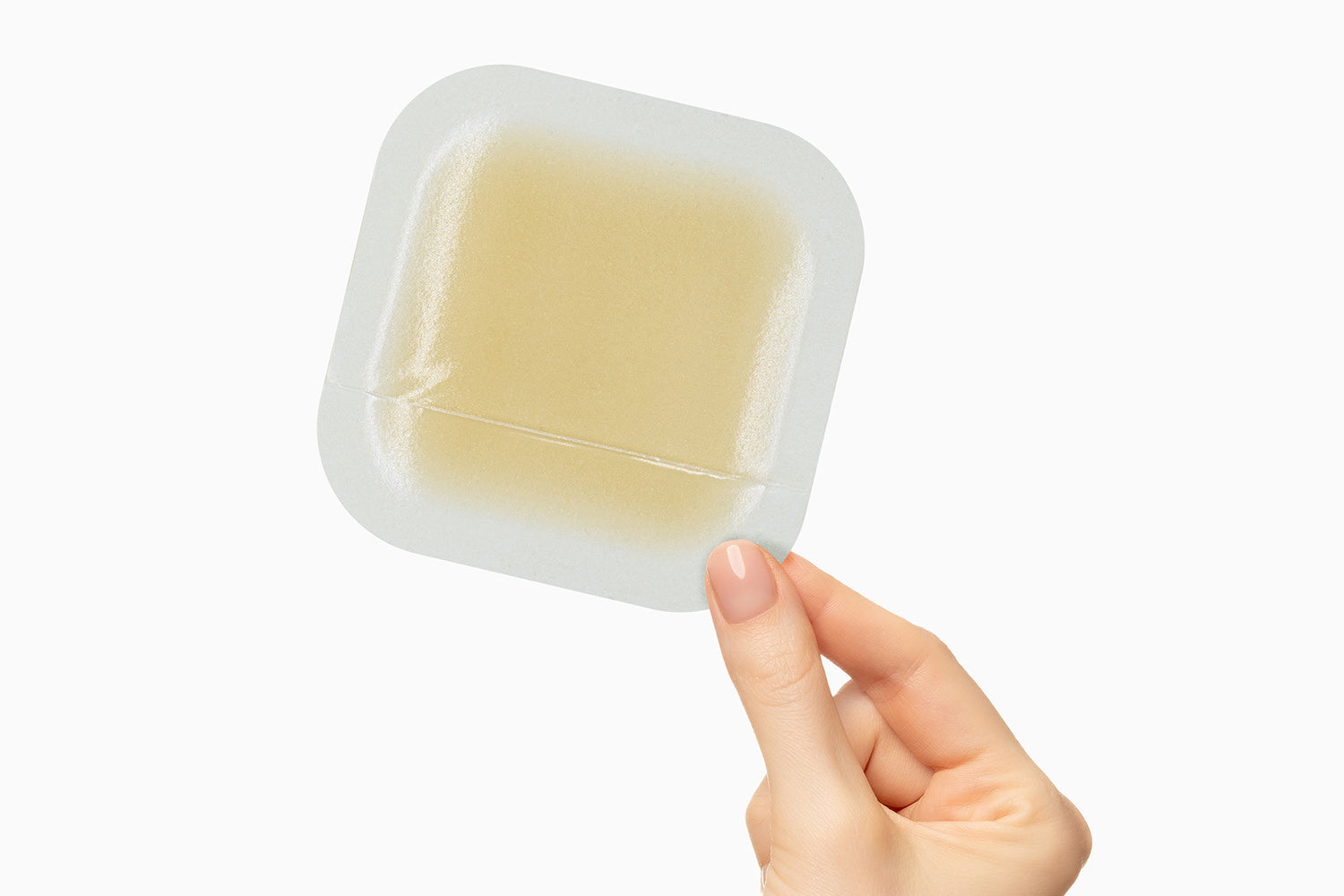If you think hydrocolloid dressings are just for minor cuts or blisters, you’re in for a surprise. These powerful wound care tools are not only used by healthcare professionals in hospitals but are also becoming a secret weapon for home care, diabetic ulcers, pressure ulcers, surgical wounds, and more.
At CellEra, we’ve seen firsthand how our Vitale® Hydrocolloid Dressings are changing lives, and today we’re sharing the lesser-known—but incredibly important—benefits that everyone should know about.
Here’s what you’ll get from this article:
- 6 surprising benefits of hydrocolloid dressings that you may not be using to their full potential.
- Actionable advice on how to choose the right hydrocolloid dressing for your wound.
- Mistakes to avoid when using hydrocolloid dressings at home or in clinical care.
- FAQ section answering the top 10 questions about hydrocolloid dressings.
- How CellEra's Vitale® Hydrocolloid Dressings can help make wound care easier, faster, and more effective.
What Are Hydrocolloid Dressings and How Do They Work?
Hydrocolloid dressings are advanced wound care solutions designed to help wounds heal faster by creating a moist, insulated environment. They are made of gel-forming agents like pectin and carboxymethylcellulose, which react with wound exudate (fluid) to form a soft, gel-like material that keeps wounds moist while protecting them from external contaminants.
Unlike traditional gauze, hydrocolloid dressings don’t just "cover" wounds—they actively assist in healing.
➡️ Related: Shop Vitale® Hydrocolloid Dressings

6 Shocking Benefits of Hydrocolloid Dressings You Didn’t Know
1. Hydrocolloid Dressings Speed Up Healing with Moisture Balance
Most people don’t realize that keeping a wound moist actually helps it heal faster. In fact, moist wound healing is supported by major health organizations like the National Institutes of Health (NIH).
Hydrocolloid dressings trap moisture right at the wound bed, allowing your body’s natural healing processes to work without interference. Unlike dry gauze, which sticks to wounds and tears away new tissue, hydrocolloids provide a protected healing environment.
💡 Pro Tip: Vitale® Hydrocolloid Dressings from CellEra come in thin and standard thickness, so you can choose based on how much drainage your wound has—thin for low-drainage, standard for higher drainage.
2. Say Goodbye to Painful Dressing Changes
If you’ve ever ripped off a bandage and winced in pain, you’ll appreciate this: Hydrocolloid dressings are painless to remove. They form a gel over the wound that doesn’t stick to the tissue, meaning less trauma, less pain, and no tearing of delicate skin.
We've all seen patients avoid daily dressing changes and finally get some relief because they weren’t dreading the pain of removal.

3. Hydrocolloid Dressings Act as a Barrier to Bacteria and Contaminants
Here’s something you probably didn’t know—hydrocolloid dressings are naturally waterproof and bacteria-resistant. They create a seal that keeps out dirt, bacteria, and even bodily fluids that can infect wounds.
This is especially important for:
- Pressure ulcers in incontinent patients.
- Diabetic wounds exposed to daily activities.
- Surgical wounds vulnerable to infection.
Vitale® Hydrocolloid Dressings are designed to conform to body contours for a secure fit, meaning the dressing won’t lift or peel prematurely.
4. Save Money and Time with Fewer Dressing Changes
One of the biggest surprises? Hydrocolloid dressings can stay in place for several days—sometimes up to 7 days—depending on wound type and exudate level.
This means:
- Less disruption to healing tissue.
- Reduced nursing time and caregiver effort.
- Lower supply costs since fewer dressings are used.
Nursing homes have seen expenses in wound supply costs dramatically cut by switching to high-quality hydrocolloids like Vitale®, and patients are happier not having to "deal with" their wound daily.
5. Versatile Use for Many Wound Types
Hydrocolloid dressings are not just for one kind of wound—they’re versatile and multi-purpose. Here’s where they shine:
- Pressure ulcers (Stage I and II)
- Minor burns and abrasions
- Surgical wounds
- Skin tears
- Diabetic foot ulcers (shallow, low-exudate)
- Blisters and minor lacerations
Because Vitale® Hydrocolloid Dressings are available in various sizes and thicknesses, you can match the dressing to the wound and body location—whether it’s a heel, elbow, or sacrum.
6. Comfortable, Discreet, and Flexible for Daily Life
Let’s face it—nobody wants a huge, bulky dressing that makes them feel self-conscious. Hydrocolloid dressings are thin, flexible, and skin-tone, so they stay hidden under clothing and move with the body—even on joints.
Patients can shower with them on. They don’t peel up when they move. And that’s a big win for anyone dealing with a wound long-term.

How to Use Hydrocolloid Dressings for Maximum Effect
Here’s how to choose and apply hydrocolloid dressings like a pro:
Step 1: Clean the Wound
- Use sterile saline or wound cleanser.
- Pat dry surrounding skin.
Step 2: Pick the Right Size & Thickness
- Vitale® Thin for minimal exudate or shallow wounds.
- Standard thickness for moderate exudate.
- Choose a dressing 1-2 inches larger than the wound to create a proper seal.
Step 3: Apply the Dressing
- Remove backing without touching adhesive.
- Smooth dressing from center outward.
Step 4: Monitor the Wound
- Leave in place until edges lift, or dressing appears saturated.
- Change every 3-7 days depending on exudate.
FAQ: Hydrocolloid Dressings
| Question | Answer |
|---|---|
| How long can I leave a hydrocolloid dressing on? | Typically 3-7 days, depending on wound type and exudate level. |
| Can I shower with a hydrocolloid dressing? | Yes! They are waterproof and can stay on during bathing. |
| Are hydrocolloid dressings good for infected wounds? | No, avoid use on heavily infected wounds—consult a healthcare professional. |
| What is the difference between thin and standard thickness? | Thin is for minimal exudate; standard is for moderate exudate or longer wear. |
| Can I cut a hydrocolloid dressing to fit my wound? | Yes, but round the edges to prevent peeling. |
| Do hydrocolloid dressings prevent scars? | They may minimize scarring by supporting optimal healing. |
| Can I use hydrocolloids for burns? | Yes, for minor, superficial burns. |
| Will hydrocolloid dressings stick to the wound? | No, they form a gel to protect the wound bed without sticking. |
| What sizes are available? | Multiple sizes to fit small to large wounds, including hard-to-cover areas. |
| Where can I buy Vitale® Hydrocolloid Dressings? | Click here to order directly from CellEra. |
Final Thoughts: Why Hydrocolloid Dressings Should Be Your First Choice
If you want faster healing, less pain, fewer dressing changes, and real cost savings—hydrocolloid dressings like Vitale® by CellEra are a smart choice. Whether you're a caregiver, healthcare provider, or managing your own wound care, Vitale® Hydrocolloid Dressings offer reliable protection and comfort that can truly improve outcomes.
With various thicknesses and sizes, CellEra makes it easy to choose the right dressing for your needs—whether you're treating a minor skin tear or a chronic wound like a pressure ulcer or diabetic sore.
👉 Ready to get started? Shop Vitale® Hydrocolloid Dressings now and give your wound care the upgrade it deserves.
You don’t have to settle for products that peel, stick, or fail to protect. CellEra is here to help with professional-grade wound dressings trusted by facilities and individuals nationwide.

Still Have Questions?
If you're unsure which dressing is right for you or want more personalized recommendations, feel free to contact us—we’re happy to help you select the right wound care solution.
Disclaimer: This webpage is designed for general information only. The information presented at this site should not be construed to be formal medical advice nor some medical procedures. Results will vary.





Share:
The Right Way to Layer Wound Dressings for Faster Healing
How to Choose a Medical-Grade Moisture Barrier for Bed Sore Prevention